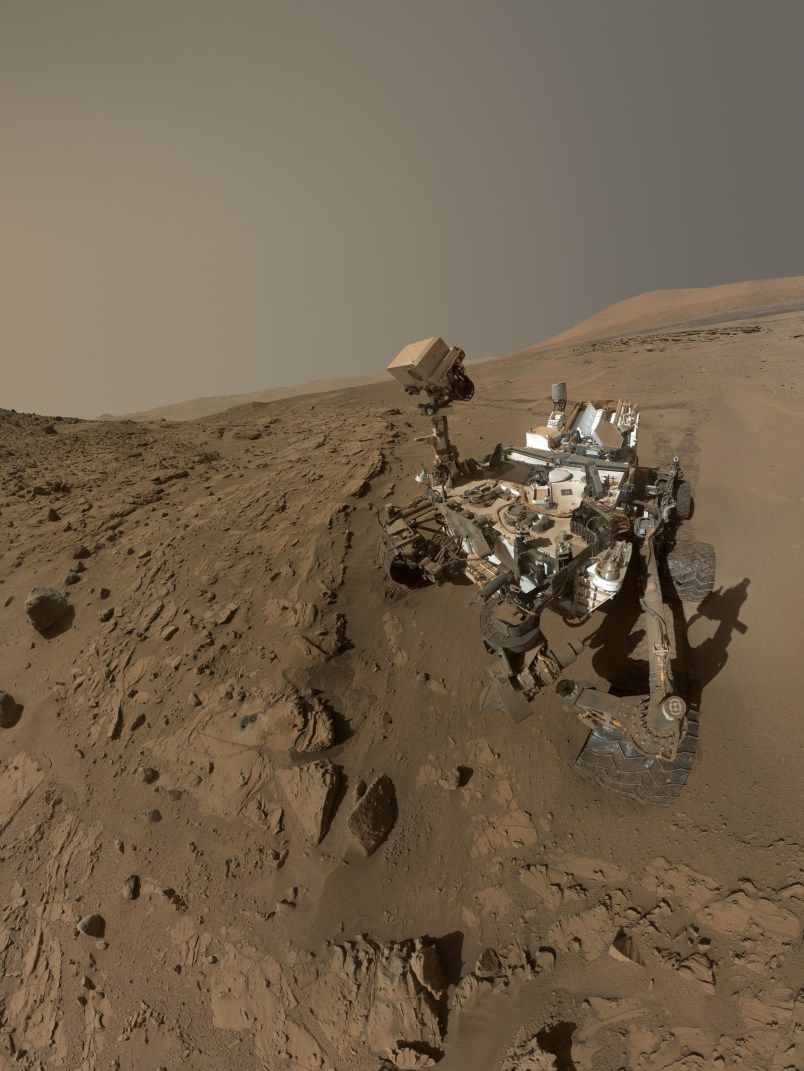TPM Reader MM chimes in on Mars’ new entry into the climate change culture wars …
I’ve been involved with Mars research on and off since 1973, when Carl Sagan published my first paper — on photostimulated oxidation in the Martian environment (essentially, how Mars got to be tawny or ochre-colored, to oversimplify a bit) — in the journal Icarus, of which he was then both publisher and editor. I’m not involved currently in any NASA missions, or in academic research related to Mars, but I have a pretty good understanding of what we think Mars is like now, and of the various theories that have come, gone, and stuck around to explain how we think it got to be that way.
You present Kentucky state representative/coal baron Smith’s statements as laughably uninformed or misinformed, which they are, and plausibly motivated by political and business considerations, as almost certainly they are. Ironically, one of the most durable theories about how Mars lost its water is as a consequence of Mars’s loss of carbon dioxide over geologic time. CO2 is the principal component of the contemporary Martian atmosphere (about 96%), and of course it’s a ‘greenhouse gas’ there just as it is here or would be anywhere else: that’s just physics. Today the average Martian surface atmospheric pressure is about 0.6% that of Earth’s — not enough CO2 to cause a meaningful greenhouse effect — but it used to be a lot higher: if Martian atmospheric pressure hadn’t been much higher, liquid water couldn’t have been stable for long enough to flow freely, form riverbeds and deltas and gullies, and ultimately form lakes stable enough to have lakebeds of sedimentary minerals (which takes a really long time, maybe as long as it takes for conservatives to accept that science isn’t a liberal conspiracy). And of course for water to flow, accumulate in lakes, and form sediments, Mars also had to be considerably warmer than it is today: well above zero Centigrade most of the time in most places, or the water would’ve been in the form of ice sheets, which we know it wasn’t. Today Mars is drier than the McMurdo Dry Valleys in Antarctica, the driest place on Earth (there is no ice).
We know that Mars is a colder, much drier place than it once was, long ago. We know that it lost almost all its CO2 and water over geologic time, but we don’t know yet exactly why or how that happened. The next step toward resolving these questions will be the arrival of the MAVEN (Mars Atmosphere and Volatile EvolutioN) spacecraft at Mars on September 22nd. Increased levels of CO2 in Earth’s atmosphere unarguably result in higher average surface temperatures over time: it’s happened several times before, and left clear evidence of it in the geologic record: it’s settled physics and settled geology. Even those who refuse to accept that the level of atmospheric CO2 is increasing as a result of human activity ought to be able to understand and accept those truths. I’m not holding my breath.
Extensive long-term carbon-based industrial activity on Mars (“Martian-genic” CO2) might possibly have saved the planet from becoming the cold, dry, barren, seemingly-though-not-certainly-lifeless desert it is today. So Smith’s ‘argument’ is exactly 180 degrees out of phase with reality.









